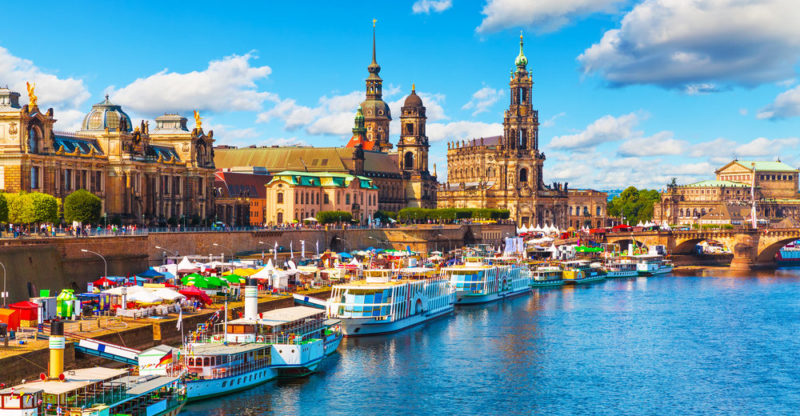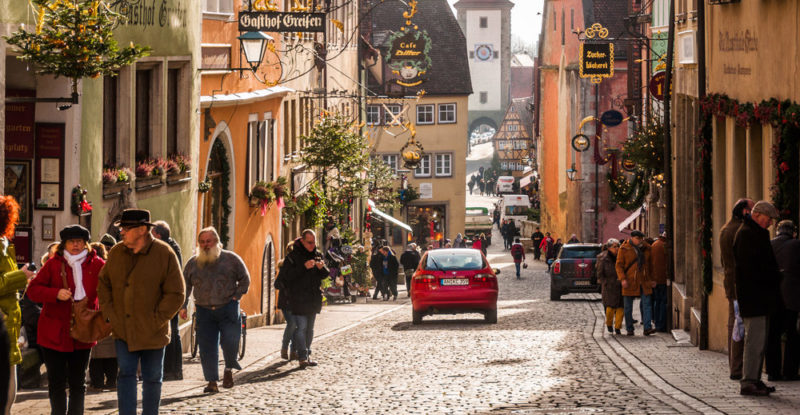We explain what Germany is, what its climate is like and the fauna and flora of this country. Also, what are its characteristics, economy and culture.
What is Germany?
Germany or Federal Republic of Germany is a country located on the European continent . This country is a federal parliamentary republic that is divided into 16 federated states and whose capital is called Berlin.
The Best Moments In Football History
Germany has a territory of 357,376 km 2 . It is bordered to the north by the North Sea, the Baltic Sea and Denmark, to the east by Poland and the Czech Republic, to the south by Austria and Switzerland and to the west by Luxembourg, France , the Netherlands and Belgium.The word " German " and " Germany " derive from the Latin word " Alamans " , a term used by the Romans to designate the people who lived in these lands because it was the closest people to the Roman Empire .
On the other hand, the Germanic term , with which the people who live in this country are currently designated, derives from the Roman expression that referred to people who were not from the Empire but who belonged to the surrounding tribes. Later, around the 10th century, the Romans occupied part of the German territory .
Geographical features of Germany
Germany has three major reliefs :
- Plain. It corresponds to the northern part of the country that is bordered by the North Sea and the Baltic Sea.
- plateau . It comprises the middle part of Germany.
- Mountain . The mountainous area is located in the southern part of Germany.
Climate and hydrography of Germany
 Germany features a temperate , oceanic climate with cool summers and wet, cloudy winters . This is due to the fact that most of Germany has moist winds from the west.
Germany features a temperate , oceanic climate with cool summers and wet, cloudy winters . This is due to the fact that most of Germany has moist winds from the west.Towards the north and northwest of the country, rainfall is abundant throughout the year.
The average temperatures during winter and autumn are from -15º to 0º C, while in summer and spring temperatures range between 6º and 24º C.
The hydrography of Germany is not too abundant, however its most important river is the Rhine River that borders Switzerland and France. Two other rivers with significant flow are the Danube and the Elbe.
German flora and fauna
 Most of the animal species found in Germany live in forests . The most frequent fauna to see in the forests of Germany are the roe deer, the red fox , red deer, wild boar, European fallow deer, beavers and otters.
Most of the animal species found in Germany live in forests . The most frequent fauna to see in the forests of Germany are the roe deer, the red fox , red deer, wild boar, European fallow deer, beavers and otters.In the area of mountains and mountains, you can see birds such as the eagle , the peregrine falcon, the common buzzard and the common kestrel. Many animals have been exterminated such as bison, wild horse , grizzly bear and elk.
The flora is abundant in the forests that currently comprise 29.5% of its total territory. They are basically timber and coniferous trees such as Oak, Pine and Birch.
German economy and currency
 Germany is considered the fourth world power and the first in the European Union .
Germany is considered the fourth world power and the first in the European Union .Germany bases a large part of its economy on exports and the countries of the European Union are its main buyers. Its first buyer outside the European Union is the United States.
Because Germany belongs to the European Union, its currency is the Euro, which is considered the strongest currency in the world (behind the US dollar).
Religion in Germany
About 61% of the inhabitants of Germany are Christians , who are mostly concentrated in the south and west of the country. However, there are also other religious beliefs such as Islam (5%), Buddhism and Judaism (with just 0.25% of adherents each).These latter religions are mostly found in the northern and eastern part of the country. However, the number of agnostics is interesting since it turns out to be quite high: 33% of the total population .
Population and language of Germany
 Germany is the most populous country in the European Union , with just over 79.8 million inhabitants.
Germany is the most populous country in the European Union , with just over 79.8 million inhabitants.Despite these population rates, the birth rate is low: just 1.4 children per woman . Consequently, its inhabitants are mostly adults (66.1%), a smaller number of elderly (20.6%) and an even smaller proportion of young people (13.3%).
This, in general terms, indicates that there is good medical health care , a high level of education and long life expectancy .
The language spoken is German , although the second language spoken is English and the third is French. Other minority native languages are Danish, Sorbian, Romani and Frisian.
German culture
 Among the outstanding historical personalities, we can count Wolfgang Amadeus Mozart and Nicholas Copernicus who, although not strictly speaking German, did share the culture of intellectual formation.
Among the outstanding historical personalities, we can count Wolfgang Amadeus Mozart and Nicholas Copernicus who, although not strictly speaking German, did share the culture of intellectual formation.This site was the seat of great and important artistic movements such as the Renaissance , Gothic and Baroque .
As for its gastronomy, the sausage, the pretzel and the beer are some of its most traditional icons.
Education in Germany
 The educational system in Germany has 4 levels: initial level, primary level, secondary level and tertiary or university level.
The educational system in Germany has 4 levels: initial level, primary level, secondary level and tertiary or university level.
- Initial level. It is optional and has children between the ages of 3 to 6 years.
- Primary level. It lasts 4 years and is taught in public schools.
- Secundary level. It has different layers. Each child is evaluated according to their abilities by recommendations of the teaching staff. In this way, each one can attend and prepare according to their characteristics.
- University level. Each student who wishes to access a university education must pass an exam called “abitur”.
Health in Germany
The health system in Germany is very complete . It has five strata or fields of social insurance: pensions, illnesses, dependency, accidents and unemployment.However, it is not mandatory to join this system , each citizen can join a private entity.
German form of government
 The government of Germany is a constitutional and federal democracy . It has a system of government that is divided into three powers:
The government of Germany is a constitutional and federal democracy . It has a system of government that is divided into three powers:
- Executive power . The highest authority figure is the head of government, elected for a four-year term.
- Legislative power . They are elected by direct elections and represent the federal states through the election of deputies. Both powers (executive and legislative) are relatively autonomous in each state.
- judiciary . It is made up of the federal constitutional court and the federal superior courts.
The above content published at Collaborative Research Group is for informational and educational purposes only and has been developed by referring reliable sources and recommendations from technology experts. We do not have any contact with official entities nor do we intend to replace the information that they emit.
Abubakr Conner brings a diverse skill set to our team, and covers everything from analysis to the culture of food and drink. He Believes: "Education is the most powerful weapon that exists to change the world." .
Leave a reply
Your email address will not be published. Required fields are marked *Recent post

Sport: What Is It, Types, Risks, Features, Characteristics and Examples
September 23, 2021

Dogs: Emergence, Features, Characteristics, Feeding and Breeds
September 24, 2021

Story: Definition, Elements, Structure, Features and Characteristics
September 24, 2021

Essay: Definition, Structure, Features, Characteristics, How to Do It
September 24, 2021
